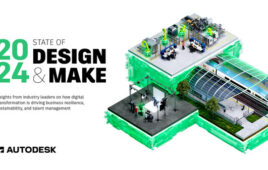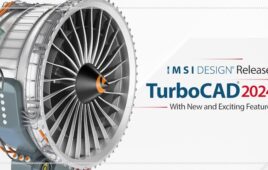Dynamic testing of performance factors for a Department of Defense (DoD) customer’s helicopter transmissions, primarily in the Apache and Blackhawk classes presented a challenge, which involved an existing bank of over 20 individual test stands. The existing test stands ranged from 20–50 years in age and had been built with single-purpose functionality. The stands suffered from a lack of readily available spare parts, special training was required to operate each stand, and it did not produce the desired level of data for analysis. These problems, along with excessive power consumption and plant floor space capacity overload, constantly increased maintenance requirements for the customer.
RedViking test stand for evaluating performance on transmissions from multiple helicopter OEMs
Testing a unit required the test article to be built and dressed within the envelope of the test stand. To complete testing procedures, the unit was fully connected to the work cell then disconnected and removed from the work cell. This procedure resulted in extremely long downtimes and various corresponding logistic challenges, which impacted the customer’s equipment use. Equipment age coupled with excessive power use, along with a series of hurdles to overcome, was a challenge for RedViking engineers.
The customer targeted three to four tests goals per working shift instead of one test per shift. RedViking performed an onsite assessment and situation analysis. After the analysis, common components and a different material handling strategy solution was sought. A series of five flexible test stand designs was determined sufficient for the replacement of all existing machines. New testing system requirements included better compilation of test data, automatic closed loop operation of the machinery, true speed and torque measurement. As the main operator, a local test executive, interfaced to the test machine, and a standardized control platform allows easier operator cross-training on the equipment.
A series of workpiece carriages were designed for greater efficiency, allowing the Units Under Test (UUT) to be mounted and staged outside the envelope of the test stand and then brought into the work cell for faster connection, test, disconnect and exit. These devices (Transportable Test Fixtures (TTFs)) automate shaft connections, clamping and positioning, as well as provides 360° access to the UUT.
SINAMICS “Drive Alley” houses the main drives for the RedViking test stand
The devised system was an entirely new modular software system and common Human Machine Interface (HMI) platform for all five test stands. Designed with a common user interface and plug-in architecture, it comprised of common function blocks, I/O coding and CAT 4 safety functions. This design approach allowed easy software configurations to accommodate various transmission models being tested.
All test profiles are generated and stored offline, with modifications made by the customer’s engineering staff outside of the test cells. Test profiles are then linked to the UUT type and model data for further system integrity.
The main software feature of the test machines is the ability to execute a fully automated, repeatable, and traceable test. To provide this functionality, a Test Sequence Set (TSS) editor allowed the customer to download and set all parameters to a Test Executive from a localized laptop; thereby, eliminating the need to modify validated machine code. The TSS editor provided the customer with adaptability to easily modify future or existing test profiles.
RedViking estimated that a test on the Main Transmission Flexible Test System, while running at full capacity, will cost approximately $400 less per hour to operate than current comparable systems. With improvements over the conventional non-regenerative testing process, the test system could generate approximately $500,000 in annual power savings.
Siemens Industry, Inc.
www.usa.siemens.com
Filed Under: ENGINEERING SOFTWARE, Test & Measurement Tips




